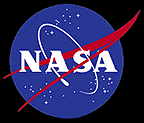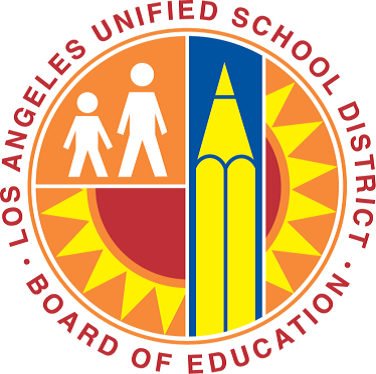|
Summer 2014
|
Hands On! Hearts On! Minds On! |
| |
| |
|
|
 |
About TEWS-Space Race Partners |
The Dorothy Jemison Foundation for Excellence (DJF)
DJF is organized for the development and implementation of programs, teaching methods, curricula and materials to advance educational experiences that produce adults fully able to contribute beneficially and effectively to society. DJF, a 501 (c) 3 non-profit foundation founded in 1996, emphasizes building critical thinking skills, experiential teaching methods, science literacy, integrated approaches to learning, social awareness and individual responsibility in achieving excellence.
DJF’s methods are modeled on the teaching principles, life and educational leadership of Mrs. Dorothy M. Jemison. Dr. Mae Jemison, a physician, engineer and former NASA astronaut and the world's first woman of color to go into space, founded DJF in honor of her mother with her sister, Dr. Ada Jemison a child and adolescent psychiatrist and brother, Charles Jemison. Juliea Robinson-Nelson is the Executive Director of DJF.
 The Earth We Share™ (TEWS) international science camp, DJF’s premiere program founded in 1994,
is designed to promote science literacy for all students. To accomplish this, TEWS developed teaching methods, curricula, materials and programs that bolster students' critical thinking skills,
integrating science, technology and society. Participants are teachers and students, aged 12-16, from across the United States and around the world. Over the four weeks of the residential camp,
students work in teams to solve current global dilemmas like “How Many People can the Earth Hold”, “Predict the Hot Public Stocks for the Year 2030”
and “Design
the World's Perfect House.” Using the TEWS Discovery Method™ teachers guide the students in defining and integrating the various components of a problem—culture, science, economics, environment, etc.—in a process the helps students see the big picture and think of solutions that can work! Once practiced, these thinking skills can be used to address all types of situations. TEWS greatest impact is that we train teachers how to be effective educators in the ever-evolving world of science. The Earth We Share™ (TEWS) international science camp, DJF’s premiere program founded in 1994,
is designed to promote science literacy for all students. To accomplish this, TEWS developed teaching methods, curricula, materials and programs that bolster students' critical thinking skills,
integrating science, technology and society. Participants are teachers and students, aged 12-16, from across the United States and around the world. Over the four weeks of the residential camp,
students work in teams to solve current global dilemmas like “How Many People can the Earth Hold”, “Predict the Hot Public Stocks for the Year 2030”
and “Design
the World's Perfect House.” Using the TEWS Discovery Method™ teachers guide the students in defining and integrating the various components of a problem—culture, science, economics, environment, etc.—in a process the helps students see the big picture and think of solutions that can work! Once practiced, these thinking skills can be used to address all types of situations. TEWS greatest impact is that we train teachers how to be effective educators in the ever-evolving world of science.
The longevity of the TEWS program is in its experiential teaching methodology, hands on implementation and its curriculum. The ability to ignite excitement in students in the US and globally in science literacy and STEM along with the growing need for the US students to rise up and seek out non-traditional and technical career paths and jobs will solidify TEWS for the future.
In addition to the TEWS camps, DJF created TEWS 2000 held at the turn of the millennium included ground-breaking events— 24 Hour
International Youth Internet Conference with Muhammad Ali on-line live; international essay contest winners from 5 different countries explored aspects of Chicago that reflect the challenges to the
future paired with renown individuals—Nobel Prize physicist Dr. Leon Lederman, Emmy winning actors Avery Brooks and Charles Dutton, Emmy winning journalist Bill Kurtis, diplomat
Dr. Kathryn Kennedy and actress, and space enthusiast Nichelle Nichols. An Internet based survey of youth around the world on attitudes about the future of the world was conducted.
Reality Leads Fantasy—Celebrating Women of Color in Flight highlighted women in aviation and space exploration from around the
world to change the way the public sees aviation and aerospace. At “Girls Day Out”—women—including a Cobra helicopter pilots, the second highest ranking
officer in the Indian Airforce, Navy medics, aircraft master aviation electricians, astronauts, suit techs and others shared hands-on experiences with young women at the Illinois Air National Guard facilities.
Other programs reached students in multiple secondary and middle schools. DJF film “Women of Color in Flight” premiered at the Gala.
 NASA Summer of Innovation (SOI)
NASA Summer of Innovation (SOI)
In January 2010, National Aeronautics and Space Administration (NASA) Administrator Major General Charles F. Bolden announced the Summer of Innovation as NASA's response to a national need for improvement in science, technology, engineering and mathematics, or STEM, education engagement of American students. NASA piloted the Summer of Innovation, or SoI, during the summer of 2010 and it launches nationwide this summer.
SoI supports student interest in STEM by strengthening the capacity of community- and school-based organizations that inspire and engage middle school students in STEM content during the summer. SoI then continues to support follow-on and extended learning efforts designed to keep students involved in NASA-themed STEM activities during the academic year.
The Summer of Innovation 2011 facilitates the alignment of summer and extended learning programming with the formal education community by coordinating summer content offerings with the local needs of schools and providing sustained professional development to certified educators in support of more effective content delivery. SoI seeks to build the capabilities of those summer and extended-learning STEM program that are viable for replication or scalability.
Vision and Mission: Advance excellence in summer and extended learning for underrepresented and underserved middle school students and inspire them to seek future STEM pursuits through the use of rigorous and exciting NASA content-based instructional resources, experiences and support tailored to local needs.
 Los Angeles Unified School District
Los Angeles Unified School District
Los Angeles Unified School District (LAUSD) is the largest (in terms of number of students) public school system in California. It is the second largest public school district in the United States. Only the New York City Department of Education has a larger student population. During the 2007-2008 school years, LAUSD served 694,288 students, and had 45,473 teachers and 38,494 other employees. It is the second largest employer in Los Angeles County, after the county government. The total school district budget for 2009-2010 is $7.3 billion. In enrollment breakdown by ethnic group, 73% of its students were of Hispanic origin and 11% of its students were African American. White American students comprise 9% of the student population, while Asian American students comprise 4%; students of Filipino origin form 2% of the student population. Native Americans and Pacific Islanders together are less than 1%.
The school district consists of Los Angeles and all or portions of several adjoining Southern California cities. LAUSD has its own police force, the Los Angeles School Police Department, which was established in 1948 to provide police services for LAUSD schools. The LAUSD enrolls a third of the preschoolers in Los Angeles County, and operates almost as many buses as the Los Angeles County Metropolitan Transportation Authority.
The LAUSD has a reputation for extremely crowded schools with large class sizes, high drop-out and expulsion rates, low academic performance in many schools, poor maintenance and incompetent administration. In 2007, LAUSD's dropout rate was 26 percent for grades 9 through 12. Bond issues and ambitious renovation programs have not uniformly eased these conditions.
TEWS Space Race targets boys and girls from Watts, East Los Angeles, Compton, CA and Lynwood, CA areas of tremendous economic need, and where the majority populations are from groups who have traditionally been under-represented in the science and technology fields. These students have a quest for knowledge and just as much of a desire to learn as anyone else living in more advantaged areas. However, the inner city presents many barriers to achieving that mission. In these areas, the average adjusted gross income (AGI) on the 2004 income tax returns was $20,486, far below the state average of $58,600. It is not difficult to see how these factors also lead to tremendous educational needs as well. Every traditional school in the greater LA area is in Program Improvement, and students have a critical need to catch up.
It is imperative to integrate STEM programs into the lives of these children to ensure access and equity to future studies and careers for these students. It is equally important to use scientific inquiry as a tool to facilitate inquiry investigations with other subject curricula to build solid skills, so students can use reading, writing, and mathematical skills fluidly and with comfort.
TEWS Space Race also targets elementary, middle and high school teacher participants. Teachers will be drawn primarily from the Los Angeles Unified School District (LAUSD) and the Compton Unified School District. Teachers at all grade levels are essential to improving science education. TEWS has found that an invaluable synergy is created when a cross-section of teachers work together and network. Specifically, since many middle and elementary teachers of science do not have a science background, they gain confidence working with high school teachers who do; and, high school science teachers learn a tremendous amount from the creativity and openness of the middle and elementary teachers.
|
|
|
|
|
| |